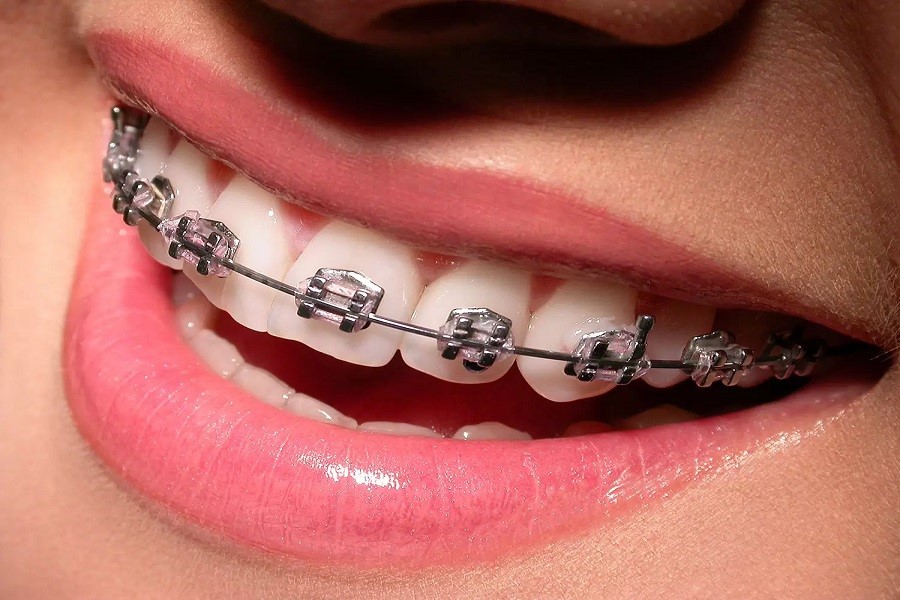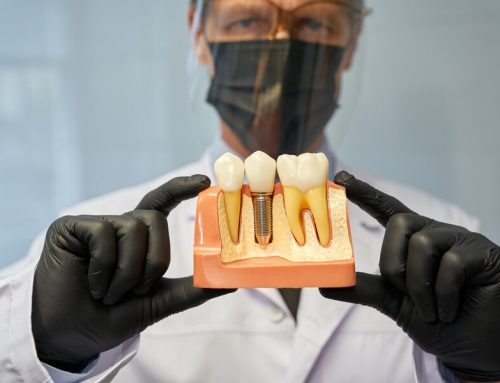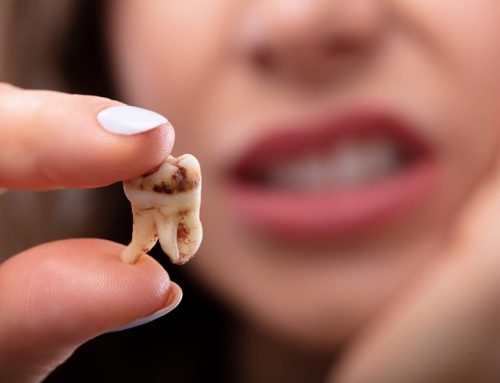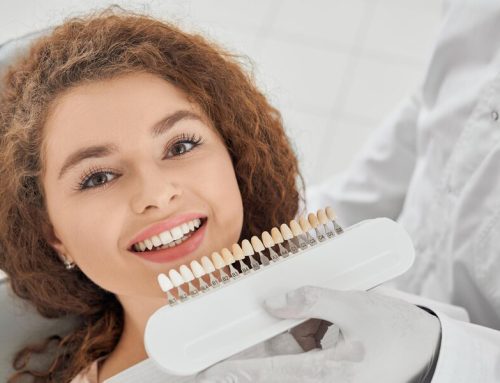The beauty of a smile is one of the important components in the attractiveness of the appearance and self-confidence of any person. Orthodontics is known as one of the advanced methods in dentistry that can correct the appearance of teeth and has a significant impact on the overall health of the mouth and teeth. In this article, we want to thoroughly examine orthodontics and its effects on dental health so that you can go to this dental method with complete information. If you also want to achieve the beauty of your smile, join us.
What problems can be corrected with orthodontics?
Orthodontics is a specialized branch of dentistry that helps treat dental and jaw problems and offers solutions to improve the oral and dental health of patients. This treatment method can be used for various oral and dental problems, which we will introduce below:
One of the most important goals of orthodontics is to eliminate abnormal gaps between teeth. These gaps can affect the beauty of your smile and can also cause problems with chewing and speaking. Dentists use orthodontics to fill these gaps and create a more regular dental structure.
Aligning the upper part and the type of teeth are also important treatments in the field of orthodontics. Irregular teeth can have a significant impact on the beauty of the face and a person’s self-confidence. Using special tools such as brackets and wires, specialists guide the teeth into their proper position and correct the crookedness.
Improving speech and chewing ability is another benefit of orthodontic treatment. Dental problems can lead to speech and chewing disorders, which affect a person’s quality of life. These problems can usually be resolved by correcting the position of the teeth and jaw.
Another important aspect of orthodontics is the treatment of bite problems, or the way your teeth overlap. A misaligned bite can lead to jaw pain, headaches, and other problems. In this case, specialists use special tools to help restore the bite and improve jaw function.
Orthodontics helps treat and correct problems related to the misalignment of the upper and lower jaws, leading to facial balance.
Is orthodontics just for beauty?
Some people go for orthodontic treatment for cosmetic reasons only; but it should be said that this procedure is not only used for beauty and can fix problems related to the mouth and teeth.
Orthodontic treatment helps correct misaligned teeth, bite problems, and crooked teeth. These issues may cause more serious problems such as chewing and swallowing disorders, increased risk of gum disease, and tooth decay. Additionally, jaw and tooth imbalances can have negative effects on speech and overall oral function.
In addition, research has shown that having healthy, straight teeth can boost a person’s self-confidence and have a positive impact on their mental health. Thus, it is not possible to focus solely on the cosmetic aspect of orthodontics and ignore the fundamental aspects of oral health and function.
When should you get orthodontics?
Many experts recommend starting orthodontics in childhood. During this period, due to the developmental characteristics of children, it is much more possible to guide the natural growth of the jawbone. This reduces the treatment time and significantly reduces costs. By starting treatment at an early age, more serious abnormalities can be prevented in the future, and in this way, the teeth can be placed correctly and in their proper position.
On the other hand, orthodontic treatment in adults does not have developmental problems; but due to the cessation of jawbone growth, it may present more challenges. However, it is also possible for adults to undergo orthodontic treatment, provided that most of the teeth are present in the jaw. In this case, designing a treatment plan tailored to the patient’s individual conditions can bring favorable results.
How to know if you need orthodontics?
If you want to have a beautiful smile, it’s time to visit an orthodontist. Also, if you feel that improving the condition of your teeth can improve your self-confidence, it is better to go to a dental and orthodontic clinic.
In addition, you should take your children to an orthodontist for a dental health check-up at the age of 7. This can help identify possible dental problems and prevent them.
The presence of abnormalities in the arrangement of teeth is also another sign to pay attention to. For example, if the upper teeth completely cover the lower teeth or vice versa, or if you have extra teeth, these can indicate the need for orthodontic treatment. Also, irregular or crooked teeth and teeth that have not erupted at all are reasons to visit an orthodontist. In addition, if you have a cleft lip or palate, it is better to see an orthodontist. Problems such as a large gap between your teeth and difficulty chewing and speaking are other signs that you need orthodontics.
Finally, an orthodontist can provide appropriate solutions by carefully examining the condition of your or your child’s mouth and teeth. Thus, if you encounter any of these symptoms, do not hesitate and see a specialist dentist. Orthodontics is an effective measure that can significantly improve your or your child’s social life and self-confidence.
The effect of orthodontics on oral and jaw health
The first and most important effect of orthodontics is to improve oral and dental health. When the teeth are properly aligned, it will be easier to access different areas of the mouth and teeth. As a result, you can easily brush and floss, which in turn prevents gum disease and tooth decay. Similarly, orthodontics acts as a preventive method against dental problems.
Orthodontics affects the health of the jaw and improves the chewing function and digestive system. When the teeth are properly positioned, the chewing process is better, which can also be effective in better digestion of food. In fact, chewing food properly has a direct effect on the health of the digestive system, and this effect improves the person’s life.
In addition, orthodontics can help correct jaw abnormalities such as a protruding lower or upper jaw. These abnormalities may cause problems such as jaw pain, headaches, or temporomandibular joint disorders. By correcting these abnormalities, the patient can get rid of many of these problems.
On the other hand, the psychological effects of orthodontics should not be ignored. Having neat and beautiful teeth can help increase people’s self-confidence. This is especially important during adolescence, when people are more exposed to social judgments. People with neater and more regular teeth feel more satisfied with themselves, and this has a positive effect on their social and professional relationships.
Does age affect orthodontics?
Age has a significant impact on this treatment method. In general, when teeth are not aligned properly or a person is facing problems related to the jaw and teeth, orthodontics is recommended as a solution to treat and prevent these problems from worsening. However, the best age to start orthodontic treatment in children is between 7 and 9 years old. At this age, the jaw and bones are growing and forming, which paves the way for correcting jaw and tooth abnormalities. Using removable appliances during this period can help prevent dental problems in adulthood and, as a result, reduce the need for more complex treatments at an older age; therefore, timely diagnosis and initiation of treatment at this age can have positive effects on a person’s dental health in the future.
On the other hand, orthodontic treatments are not limited to children and adolescents, and adults can also benefit from this method. Orthodontics is also possible after puberty; however, as age increases, the chances of treatment success typically decrease and its duration increases. The reason for this can be attributed to the structural changes in the bones and soft tissues surrounding the teeth that occur with age; therefore, anyone at any age can undergo orthodontic treatment, but early treatment planning can yield better results. In short, there is no age limit for orthodontics; but age can have a significant impact on the treatment process and its results.
What problems may arise if we do not have orthodontics?
The issue of dental orthodontics is one of the main concerns for many people. In this regard, some people refuse to undergo orthodontic treatment for various reasons. This decision can have significant consequences and complications for oral and dental health. Below, we will examine the consequences of not receiving orthodontic treatment and the possible problems caused by dental diseases and disorders:
Periodontal Disease
One of the major problems faced by people with crooked teeth is the possibility of periodontal disease. Periodontal disease, or gum disease, refers to inflammation and infection of the tissues around the teeth. People with crooked and crooked teeth are more susceptible to this disease, even despite careful oral hygiene, due to the difficulty in cleaning their teeth. Studies show that gingivitis can directly affect the overall health of the body and lead to cardiovascular problems, diabetes and other diseases.
Tooth decay
Tooth decay is another complication of not having orthodontic treatment. Crooked and crooked teeth usually do not provide us with enough space for proper cleaning with a toothbrush and floss. As a result, food debris easily remains on the teeth and over time, leads to tooth decay. According to published statistics, people with irregular teeth are more likely to suffer from tooth decay than others. Also, this issue can impose high costs on the patient for dental treatment, loss of teeth and their replacement with dentures and implants.
Loose teeth
Crowding and imbalance in the placement of teeth can lead to their loosening. The extra pressure placed on the teeth and gums weakens and damages the tooth-supporting structures. This damage may lead to tooth loss or cause serious pain and discomfort in patients.
Digestive problems
Dental disorders such as overbite (the upper jaw is ahead of the lower jaw) and underbite (the lower jaw is ahead of the upper jaw) can cause serious problems in chewing food. Proper functioning of teeth when chewing is very important for digestion, and when teeth are not aligned properly, the chewing process is disrupted, which makes it difficult for food to be digested in the stomach. Digestive problems caused by this can lead to diseases such as stomach ulcers and other digestive disorders over time.
Chronic headaches
Ignoring jaw and dental problems plays an important role in the occurrence of chronic headaches. The extra pressure that comes from imbalance and incoordination between the jaws can cause muscle tension and ultimately headaches. Hence, many people with misaligned teeth suffer from frequent and chronic headaches that severely affect their daily lives.
Respiratory problems
In some cases, the size of the jaw and teeth can lead to respiratory problems. For example, a small jaw and large teeth, or vice versa, can restrict the airways. People with this condition are usually forced to breathe through their mouths, which can lead to sleep disorders in addition to causing breathing problems. Jaw tightness may also cause facial asymmetry and have psychological and social consequences.
Conclusion
Orthodontics plays a crucial role in improving the health of your teeth and the beauty of your smile. In this article, we will examine the positive effects of orthodontics on your oral health and see how much this treatment can boost your self-confidence. Orthodontics can correct jaw and tooth abnormalities and help improve chewing function and oral hygiene. It can also boost your self-confidence by improving the beauty of your smile. As a result, you can choose the best treatment for a beautiful smile by consulting with your dentist.







Leave A Comment